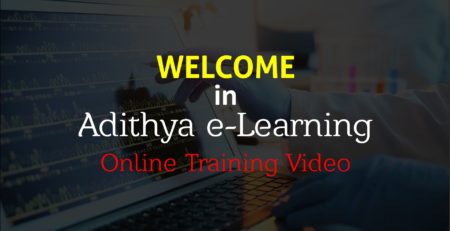AWS Amazon Web Services Online Training Hyderabad
Course Details: Cloud Computing
AWS Amazon Web Services (Solution Architect & Sys Ops Administration)
Basics on AWS DevOps Associate.
The Cloud Computing Training content is developed with the goal of equipping trainees with the skills needed for taking up the coolest job for the next generation. The Training introduces you to the Amazon Cloud and the skills required to work on AWS Amazon infra management on various stages to achieve meaningful insights. Realizing the applications and statistical concepts and building Cloud Architects in the AWS Amazon Cloud field using the Aws Amazon tools is at the heart of the course content. The required tools and techniques for asking the right kind of questions to make inferences and predicting the future outcomes are discussed during the course of the training. All along with the training, we will be using the real world and real-time scenarios wherever applicable to give you the comfort in taking up the Cloud Computing job and start performing from day one!
Below are the objectives of AWS Amazon Cloud training:
- Get hands-on with the AWS Amazon Management Console environment and Resource Managing
- Understanding the Services available in AWS Amazon Console.
- Hands-on with AWS resource like EC2, ELB, Auto Scaling, IAM’s, AMI’s, RDS, Cloud Watch, Cloud Front, Route 53, S3, VPC, VPN, SNS, SES, Cloud Formation, Lambda, System Managers, etc.,
- Various techniques for AWS Design and Configure the infra using AWS Amazon management console. 5. Apply customer views to build the AWS Amazon Infra services for productivity.
This course will cover the following concepts on each day
- System Operations on AWS Overview
- Networking in the Cloud
- Computing in the Cloud
- Storage and Archiving in the Cloud
- Monitoring in the Cloud
- Managing Resource Consumption in the Cloud
- Configuration Management in the Cloud
- Creating Scalable Deployments in the Cloud
- Creating Automated and Repeatable Deployments
Who can undergo the Cloud Computing Training?
Every industry is seeking towards Migrating to Cloud infra for getting an edge over competition in the market. Given the dearth of skilled cloud engineers, there is an enormous opportunity for professionals at all levels in this area.
- IT professionals looking to start or Switch careers in Cloud Computing.
- Professionals working in the field of System and Network Administrator & Graduates planning to build a career in Cloud computing.
Pre-requisites for the Course?
- The ideal pre-requisites for this class are prepared individuals who have:
- Strong interest in Cloud computing
- Background in introductory level of basic concepts of Systems Administration
- Background in either software development or systems administration
- Inquisitiveness & good communication skills to be a successful Cloud Computing Engineer.
- Some experience with maintaining operating systems at the command line (shell scripting in Linux environments, cmd or PowerShell in Windows)
Course Curriculum:
Session 1: 1. Introduction on Linux and Windows
- Introduction to Unix and Windows, Installation of Linux and Windows
- User, Group Administration,
- Disk Partitions
- Mounting File Systems
- Backup and Recovery
Session 1:
- Introduction to Cloud Computing and AWS Amazon.
Learning Objectives – You will be introduced to the Cloud Computing field and various pre-requisites to succeed as AWS Cloud Engineer. This session gives you a taste of real-world uses cases of AWS Amazon. You will be introduced to the AWS Amazon Console and Managing, which is the basis for the entire training structure. Also, the Cloud environment setup and basic structure will be discussed.
Topics:
Introduction to Cloud Computing (1 Hour): What is Cloud Computing, Cloud Computing – and why it is the coolest job of next-generation, Cloud Computing skills, Use cases,
Introduction to Aws Amazon Cloud: Getting started with Amazon Web Services (AWS)
- Creating accounts and analyzing the cost breakdown
- Evaluating Service Level Agreements (SLA)
- Console, command-line tools, and API
Overview of the architecture
- EC2
- EBS
- ELB’s
- Auto Scaling
- IAM’s
- RDS
- VPC
- Cloud Front
- Cloud Watch
- Glacier
- S3
- SNS
- Route53
- Trust Advisor
- Cloud Formation
- System Manager
- Cloud Trail
- Lambda
- Lucid Charts Tool
- DevOps Tools like Code Deploy, Jenkins, Git, etc.,
Session 2:
- AWS Amazon EC2:
Learning Objectives – This session deep dives into various AWS Amazon services – EC2 types and their usages. The EC2 overview and types such as Windows, Linux, and Other different types. Various other important commands such as generating sequences and repeats which are vital parts of data analysis will also be discussed.
Topics – Managing the EC2 Infrastructure, EC2 Pricing, AMI’s, Snapshots, EBS, Create and Manage EBS, EC2 AMI’s, Security Groups, Elastic Load Balancers, Auto Scaling, Launch configurations.
Provisioning resources:
Create an instance and custom amis. Connecting to Instance and Modify all settings. Create and Add Elastic Block Store (EBS) and instance store root devices Assigning elastic IP addresses Mapping instance types to computing needs, Persisting off–instance storage with EBS volumes Creating backups with snapshots
Session 3:
- AWS Amazon RDS:
Learning Objectives – The biggest challenge in RDS while working with massive databases involves various sources. These RDS might be in a variety of formats likes MS SQL, MySQL, Oracle, PostgreSQL. This session targets to understand how to create RDS using AWS which might be available in varied formats for creating RDS. You will be introduced to types of RDS and their sources. These RDS will be used for our case studies throughout the training.
Topics – Relation Databases (RDS) Overview, Multi-AZ & Read Replicas, Types of RDS, Creating Database, Creating Read Replicas, Managing Master and Read Replicas, RDS Failover, Security Groups, Parameter Groups, Managing and accessing RDS using Open Source Tools, Create Backups and Snapshots.
Session S3:
- Storage Services: S3 & Glacier
Learning Objectives – We will work on S3 for data uploads like images, pdfs, and videos. We will also work on storing all the logs and managing data logs in S3. The objective of this session is to prepare you to handle such real-world challenges which come at your doorstep along with the data that was acquired. This session focuses on various tools and techniques in S3 for uploading the data into buckets and content for further data.
Topics – S3 Overview, create an S3 Bucket, create an S3 Bucket, S3 Version Control, S3 Life Cycle Management & Glacier, S3 Security and Encryption, Storage Gateway, Import-Export, S3 Transfer Acceleration, Creating and Managing S3 Buckets, Uploading Data to S3, Security settings for S3, Managing Logs in S3, Managing Archiving to Glacier.
Achieving high durability with Simple Storage Service Transmitting data in/out of the Amazon cloud
Session 5:
- VPC
Learning Objectives – At the core, VPC is Firewall in AWS Amazon. It provides very powerful security to handle other services in a simple way. This session starts with providing techniques for handling VPC such as creating subnets, VPNs, and then it exposes you to various infra required for performing descriptive and inferential in the cloud.
Topics – VPC Overview, Types of VPC’s, Creating VPC, Subnets, Route tables, Read Replicas, Security Groups, Parameter Groups, Managing and accessing RDS using Open Source Tools, Create Backups and Snapshots
Session 6
- Cloud Front and Cloud Watch and Cloud Formation
Learning Objectives – Data visualization is an essential part of the content delivery during the data exploration and data delivery and communication of inferences from the study. You will be made to understand the content delivery capabilities using Cloud Front and its flexible development environment. You will learn to generate CDN for delivering the application at the end or edge locations.
Topics – Create A Cloud Watch Role, Monitoring EC2 with Custom Metrics, Monitoring EBS, Monitoring RDS, Monitoring ELB, Monitoring, Centralizing Monitoring Servers, Consolidated Billing, Billing and Alerts, Monitoring and Metrics Quiz
Session 7:
- Route 53
Learning Objectives – Route 53 is Domain Registration, Domain Management, and Health Check of Domains. This session provides you knowledge of Domain registration and Domain Management. You will learn how to create or manage the Hosting of Domains during this session.
Topics – Route 53 Overview, Types of DNS Records, Understanding the DNS Records, Creating Hosted Zones, Managing Hosted Zones.
Session 8:
- IAM’s – Identity and Access Management
Learning Objectives – This IAM is user management. You will learn how to create or manage users, groups, roles, and policies during this session
Topics – IAM’s Overview, Understanding the IAM’s, creating users, groups, roles, and policies, Managing Access Keys and Secret Keys, Authentication.
Session 9:
- Trust Advisor.
Learning Objectives – With the increase of servers or services in the cloud, the data generated has increased many folds, bringing in the huge scope for gaining insights into the untapped security of cloud services and their data. This Session helps you learn various techniques to optimize the cloud resources and cost.
Topics – Trust Advisor Overview, Fundamental of Trust Advisor, Cost Optimization,
Session 10:
- Real-Time Scenarios and Q&A
Learning Objectives – This session gives an overview of the various cloud environments and learning tools to manage cloud infra. Also, this session gives a brief overview of the AWS architect and sysops, which is very useful to deploy an environment.
Topics – Real-time scenarios, Real-Time Architect, how to identify the resource in AWS cloud to manage an application. Last Q&A&nbs


